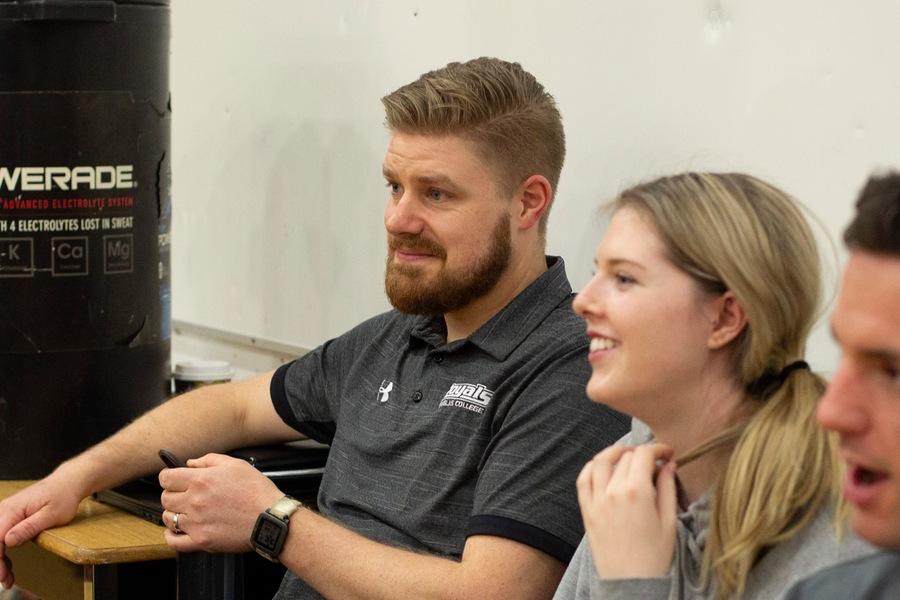Whether it's broken arms, legs, wrists, collar bones, or a ruptured spleen, Douglas Royals head athletic therapist Nick Murray has seen it all throughout his 10+ years of experience.
Since joining the Royals, Murray has contributed heavily to our athlete's physical well being, and has had quite an interesting journey leading up to where he is today.
Murray grew up in Logan Lake, BC, and played a variety of different sports growing up, with his favourites being hockey and tennis. His love for sports led him to pursue a career as an athletic therapist in order to stay involved with sports beyond the recreational level. He went on to graduate from Mount Royal College, specializing in athletic therapy, and was certified as a therapist shortly after.
Six years before joining the Royals, Murray was able to live out his dream working for high level teams including the Vancouver Giants, the Vancouver Canucks during their 2013 playoff run, and Team Canada during their run in the 2015 IIHF U18 World Championships.
'My time with the Giants was really great. It was where I did most of my learning and growing as an Athletic Therapist. My time with the Canucks was very short lived, but very surreal. For each of the nine days I was there, I was in awe of the fact that I was living my ultimate dream. Working with Hockey Canada for the 2015 IIHF U18 World Championships and for the 2016 Ivan Hlinka Memorial Tournament was a dream come true as well. Being able to travel abroad and represent Canada was a true honour.' Murray said.
In 2017, Murray decided to step aside from the hockey world in order to look for other opportunities which would allow him to spend more time with his young family.
Nonetheless, he said that his prior experience 'really shaped him into the athletic therapist that he is today,' and an experience like working Team Canada taught him "how to adapt really quickly to working with new people in new environments." He says that this translates "really well into working with our Royals teams as they compete at Provincial and National championship tournaments."
Murray has now been with the Royals for almost three years and says that "it's been really great."
'I really enjoy working with a huge variety of athletes from a wide variety of sports. I have also found that since all of the student-athletes are at the college age, they are usually more mature and have a good understanding of their bodies and how they can help the process of rehabilitation.' Murray Said.
He finds that "seeing an athlete work so hard during rehabilitation, then finally getting back to the sport they love after a major injury," is the most rewarding experience in his professional career.
Ultimately throughout all of his experience, Murray says that for student-athlethes, the most room for improving their performance lies in the following three areas:
SLEEP
'Being students first and athletes second. Student-athletes have a really difficult task of balancing school, their sport, a personal life, and maybe even work. This makes it really difficult to manage their sleep and even nutrition. Sleep is a straightforward concept that many people, especially students, struggle to do adequately.'
RECOVERY
'Recovery is an often overlooked and relatively easy way to prevent injuries. It can simply be a fifteen to twenty minute cool-down after practices, games, or workouts. Our student-athletes are lucky to have access to a cold-tub on campus for use after home games to help their bodies recover more quickly.'
NUTRITION
"Nutrition is quite a bit more complicated, but can be a remarkable tool to improve performance and recovery. Small improvements in diet (reducing fast food, increasing vegetable intake, etc.) can make big changes in how an athlete and their body respond to training sessions and ultimately improve performance."



